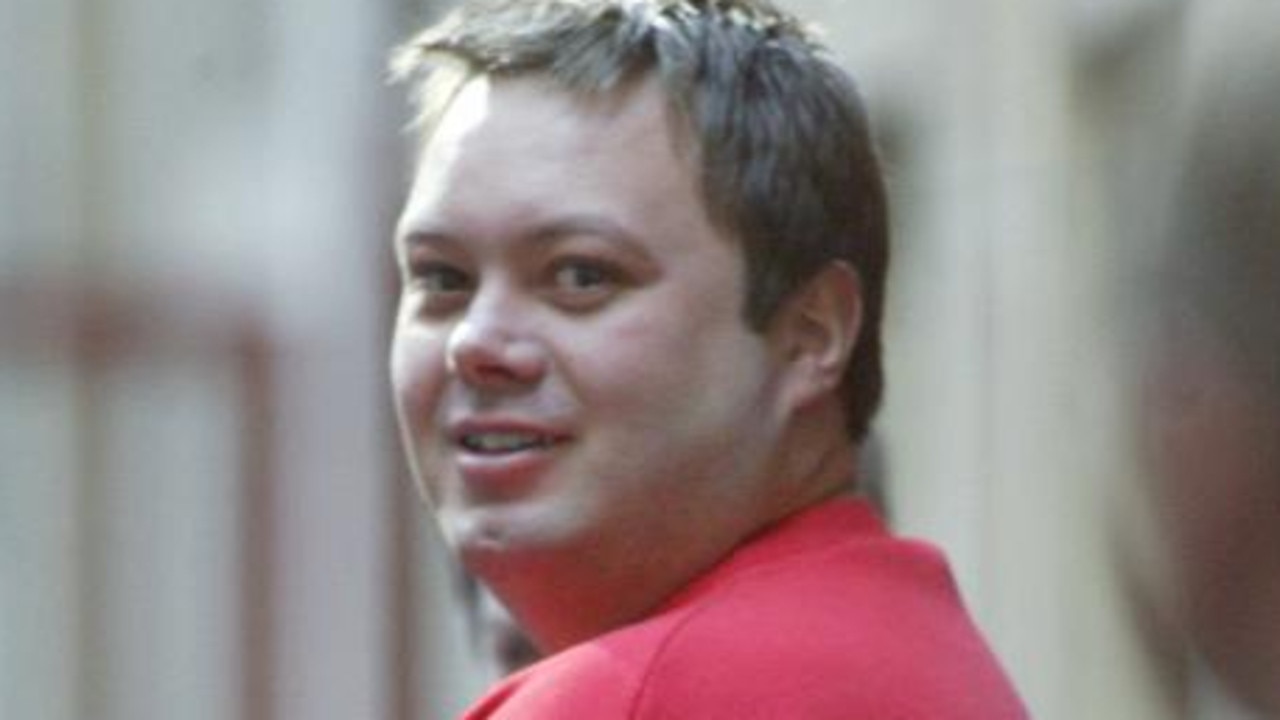Aboriginal trackers being celebrated as part of SAPOL’s Foundation Day at Tandanya National Aboriginal Cultural Institute
They can uncover vital clues seemingly out of nowhere and identify offenders from a footprint left in the dust. Finally, the remarkable skills of Aboriginal trackers are being recognised.
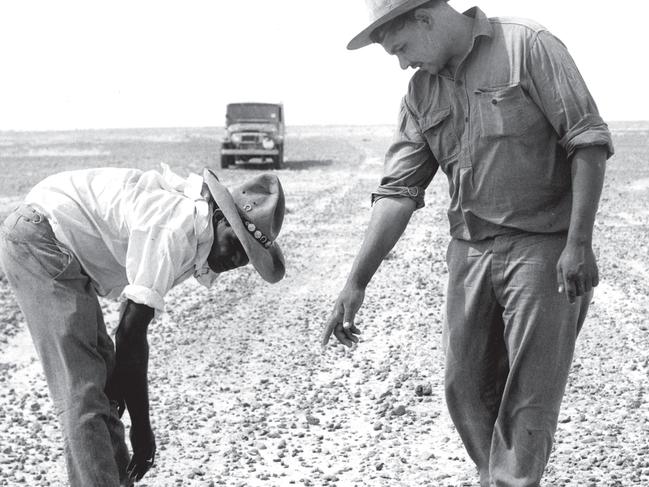
Our Criminal History
Don't miss out on the headlines from Our Criminal History. Followed categories will be added to My News.
A man aged between 30 and 40, 1.8m tall, with a pigeon left foot and a bit heavy round the waist.
This is the perfectly accurate description legendary Pitjantjatjara trackers Jimmy James and Daniel Moodoo gave of a sexual predator who attacked a six-year-old girl in the Riverland in the late 1950s.
READ BELOW: Amazing skills to find clues out of nowhere
The pair tracked his “sloppy walk” through an orange orchard before he disappeared at the edge of a bitumen road. All they had to go by — according to the naked eye — were subtle marks left behind in the dry dirt.
The pair explained to police at the time: the suspect wore smooth-soled leather boots and so was probably a bit large; when he was running across the orange orchard he flipped his left foot, flicking up dirt in the air; and he had to bob down to walk under a tree.
“We’ll know him if we see him,” they said.

Several months later, trackers James and Moodoo met up with local detective sergeant Max Jones at the Berri racecourse while watching the horses.
Tracker James told Sgt Jones they’d identified the suspect’s tracks — trackside.
The trackers led Sgt Jones — who recounts the story in his book, Tracks — to the racecourse bar, and then the betting ring. There, they pointed to the man who was identical to the description they had provided months earlier.
The suspect was arrested and made a full confession about attacking the girl, running through the orchard and hitching a lift from the side of the road.
This tracker duo are among the most celebrated in South Australian crime-fighting history, but there are many more being commemorated today at a special SA Police event in the city.
Some, like 1950s tracker Albert Anunga, were known to hum his way, as though in a meditative trancelike state, through the bush, squatting here and there to feel the ground, look to the sky and stop and listen and see things invisible to the white person’s eye. Others, like retired community constable Stanley Douglas, 68, are synchronised to the movement of the sun.
“If the sun is up, they rest in the shade,” he says.

“As the sun moves to the shade, their tracks are left behind. Then you can tell how far behind you are, just count back the time from the shade.”
Mr Douglas, who lives in Amata in the Far North, was one of SA’s first police aides, in the Anangu Pitjantjatjara Yankunytjatjara Lands, in 1986.
He says barefoot wanderers walking on spinifex are near impossible to track. “You got to just try to keep up until they step on the rocks or the sand again,” Mr Douglas says.

He recalls he and Community Constable Mitika Burton tracked an elderly man from Fregon. The man’s health was a concern, and they feared for his safety.
“It was hard because you can’t see the track at night,” Mr Douglas says.
“The next day we came back to the last place and started again. We found him, poor old thing.
“You really got to be thinking really hard, your head hurting, thinking really hard because you can find him only two ways — dead or alive.”
SINCE the SA Police force was founded on April 28, 1838, records show more than 65 Aboriginal trackers have assisted in finding murderers, rapists, prison escapees, and children who are lost or even kidnapped.
The trackers’ rare and diminishing talent, instinct and ancient skills — handed from generation to generation — are being celebrated as part of SAPOL’s Foundation Day at Tandanya National Aboriginal Cultural Institute.
Commissioner Grant Stevens and Premier Steven Marshall are expected to highlight the close working relationship between police and Aboriginal people and the remarkable achievements of the trackers past and present.

Trackers will be present, including Mr Douglas and Community Constable Dean Walker, and the family, friends and colleagues of current and retired trackers and those who have passed.
A photographic display and commentary of 13 trackers will be unveiled to give an insight into the historic and contemporary use of the ancient skill and craft of tracking provided to SAPOL over the past 181 years.
Among those officiating will be acting co-ordinator for state operations Superintendent Paul Roberts.
He’s worked with Aboriginal police aides, community constables and trackers for the past 30 years and is still baffled by their supernatural skill.
“Everyone thinks tracking is about locating a broken twig here or there but it is so much more,” Supt Roberts says.
“It is an understanding of the total environment and subtle changes give a different perspective on how they see things. It is awe-inspiring when you see it in action.”
OVER the past three decades the veteran policeman has been involved in many cases requiring the supersensitive skills of Aboriginal trackers right across the state and beyond.
“When we operate, the trackers’ preference is to limit the number of people around them — they just need the country to themselves and we follow behind them taking notes and what they identify to us and that then becomes part of the evidence,” Supt Roberts says.
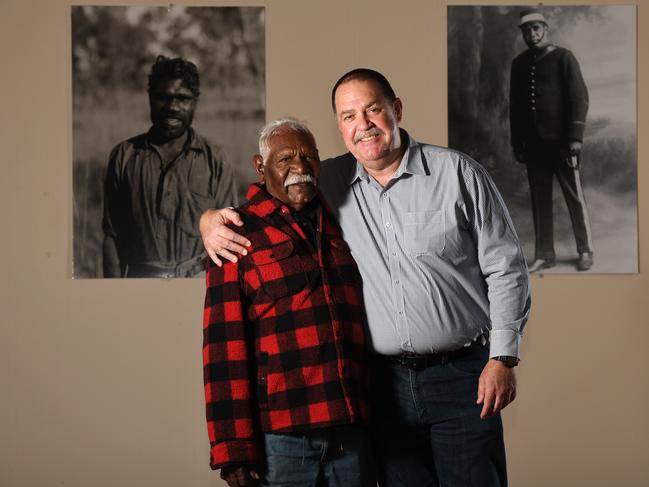
One case he remembers vividly was the successful find and arrest in 1986 of five prison escapees from Western Australia who had crossed the border by truck and then fled into the bush after crashing into a police car near Penong.
He says there were multiple, separate tracks with very independent trajectories intertwined over vast bushland for the trackers to untangle and sustain reconnaissance over three long days.
“They were totally engrossed in the environment for this entire time and that level of concentration was inspiring,” Supt Roberts says.
DESPITE all the technological advances over the decades, Supt Roberts says the accuracy and steadfastness of century-old tracking skills remain.
“We have infra-red cameras and heat-seeking devices but, at the end of the day, time and time again, we come back to the ever-reliable trackers that support us,” he says.
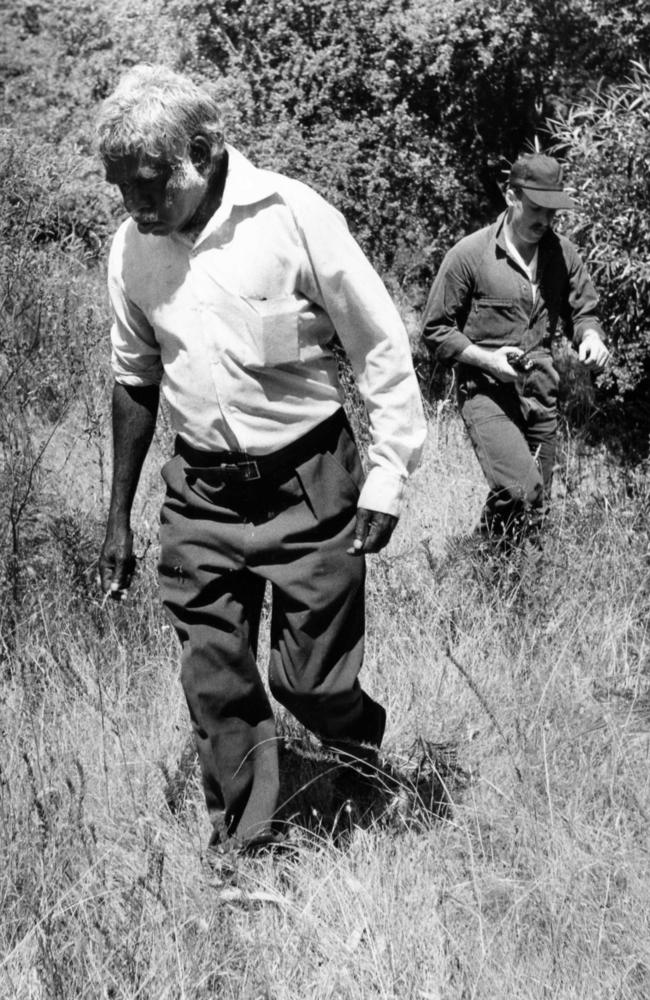
Supt Roberts says he’s witnessed trackers pinpoint with complete accuracy — without ever having seen a suspect or a missing person — what their injuries are. Time again, their observations, he says, have been validated by coronial findings.
“How does anybody in this day and age operate as a complete forensic unit?” he says.
“How does that happen? All those forensic scientists and pathologists rolled up into one person — with all the advances in science and medicine, how has a skill that is passed down for tens of thousands of years been able to continue to be corroborated by the science that we have today?”
Supt Roberts says the assumption that tracking involves the identification of a broken twig or a footprint is naive. “They are not just tracking, they are totally one with what is happening with that individual and the world around them at that time in that place,” he says.
“These guys don’t just follow the track, they are totally in synch with the mental and physical state of that person and the land they are following — how do they do that?
“Thirty-eight years on and I’m still in wonderment and awe at the skill, experience and perspective of these trackers.”
SOLVING MAJOR CASES
JULY 2015: trackers, including Community Constable Dean Walker, tracked Danny Ferguson for four days over 100km north of Oodnadatta. Ferguson was found guilty of manslaughter over the death of his girlfriend, who was also Constable Walker’s relative.
AUGUST 1982: Tracker Jimmy James tracked convicted killer James George Smith for 100km over six days through bush and scrub across the Riverland and into NSW after escaping custody for the 1977 murders of two boys and their mother.
OCTOBER 1966: Nine-year-old Wendy Pfeiffer found sheltering under a tree near Onkaparinga River by trackers Jimmy James and Daniel Moodoo three days after she was abducted, stabbed and dumped at Mt Bold.
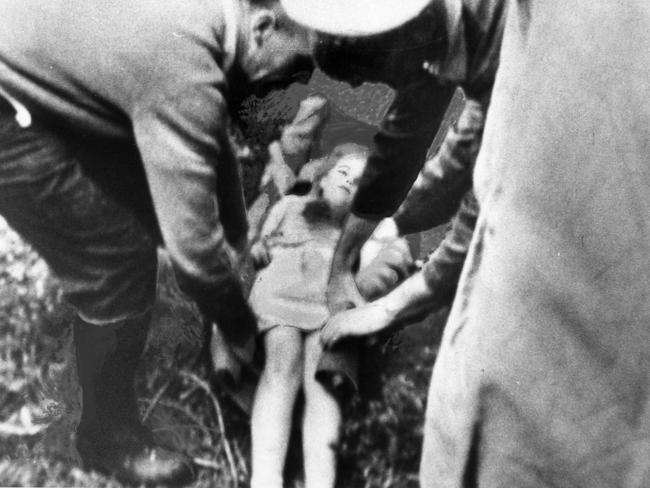
JANUARY 1964: Trackers find
the bodies of the Page family, a mother, father and three children, who had ran out of fuel and went searching for water off the Birdsville Track.
NOVEMBER 1958: Trackers, including Jimmy James, led police to the murderer of Pine Valley Station owner Neville Montgomery four days after the crime and despite heavy downpour.
DECEMBER 1957: Mr James and others help lead police to the arrest of Raymond John Bailey for the murder of three people at Sundown Station.
NOVEMBER 1945: Tracker Warrianha Ryan finds a five-year-old girl from Bordertown four days after she wandered off into the bush. “Invaluable work by Aboriginal Trackers” was headlined by the Border Chronicle at the time.
AMAZING SKILLS TO FIND CLUES OUT OF NOWHERE

COMMUNITY CONSTABLE
DEAN WALKER
Has worked in Coober Pedy since joining the police in 2004. In 2015, he tracked a suspect for four days over 110km after the man fled into the bush.
“We couldn’t track any more because the sun was going down,” he says.
“At 4.30am on the Monday morning we started again, and I located (the suspect’s) tracks at the dam.” The suspect was found, with a large knife, and was charged with murder and subsequently found guilty. The victim was Constable Walker’s relative.
COMMUNITY CONSTABLE
MITIKA BURTON
Worked in the APY Lands from 1988 to 2009. He was able to accurately pinpoint the cause of death of a man found in his car at Ernabella as being internal bleeding in the stomach.
The coroner’s report confirmed the man had died of a perforated stomach ulcer.
COMMUNITY CONSTABLE
STANLEY DOUGLAS
“When we tracking we look for the rock, sticks — things that you can see have moved,” says the now-retired community constable.
“When the sun is at lunchtime it gets harder. When people walk on the rocky sand, when they move their foot, it moved the rocks and we follow it but sometimes we can’t find him. I can see what time they take a rest, too.”
SENIOR COMMUNITY CONSTABLE
JACK CROMBIE
Joined the police as an aide in 1993 and worked for nine years at Coober Pedy.
He has used his tracking skills to save many lives, including two young Greek men lost near Coober Pedy after their car broke down.
“If I hadn’t of tracked them, they would never have been found,” he says.

JIMMY JAMES, OAM
The famous Australian tracker assisted police for more than 40 years in some of the state’s most notable cases, including the Sundown murders, the Pine Valley murder and the highly publicised 1966 case of eight-year-old Wendy Pfeiffer who was abducted, stabbed and dumped in bushland.
James came to public prominence yet again in 1982 when he successfully tracked an escaped child killer, James Smith, through the Riverland for six days. In 1983, James was awarded the inaugural South Australian Aboriginal of the Year Award and an Order of Australia in 1984. He died in October 1991. A granite memorial stands in Berri in his honour.
ALBERT ANUNGA
Mr Anunga worked closely with now-
retired detective sergeant Max Jones in the Riverland for many years. In his 1989 book Tracks, Sgt Jones describes the case of a 20-year-old man with a slightly deformed left toe who sabotaged and derailed a train in the 1950s. Mr Anunga identified the man without ever having laid an eye on him. “He’s a boy-man, boss. Between 16 and 20-years-old, about 11 stone, maybe a little bit more. His right foot is a little bit crook, he walks with a limp.”
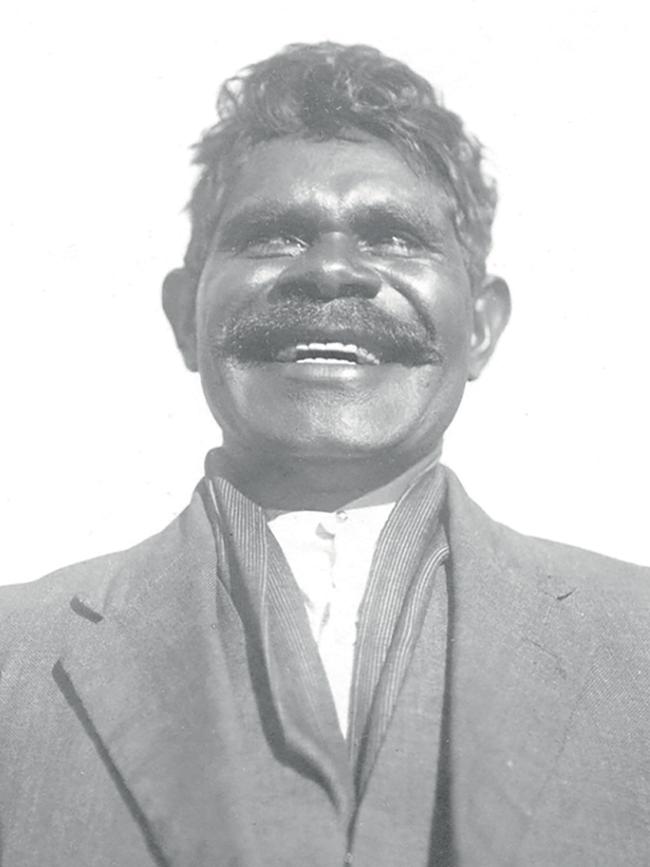
TOMMY NAPOLEON, AND TRACKERS
ALBERT AND JACK
The trio were noted in 1936 for
helping mounted police find a man’s tracks in the state’s far northeast after he had abducted a 13-year-old girl from a Queensland cane farm years before.
They tracked him back to Queensland when a downpour all but washed away any lingering signs. Mounted Constable John Finn recounted: “I sat down on a little bank on the creek to fill my pipe, and Napoleon came along and said: ‘There him go, look!’.
“Now if I said I could see those tracks I’d be telling a damn lie.” They tracked the suspect back down to SA where he zigzagged west, then south and east and then they lost him.
LANKY KANA
A Boandik man from the South-East and a respected member of the Beachport Police during the early 1900s, he was renowned for his work with the police horse brigade, and a street in the town is named in his honour.
WARRIANHA (ALF) RYAN
Born at Lyndhurst in the Far North in 1889, Mr Ryan (pictured right) joined the police in 1912. In 1928, he tracked two Yatala Labour Prison escapees to a farm near Naracoorte, where they had set up camp.
In November 1945, he found a five-year-old girl from Bordertown four days after she had wandered into thick scrub and become lost.
WULGIE NABA (NEIGHBOR)
In 1911, he became the Roper River Police Station tracker in the Northern Territory after saving a policeman — later to become the commissioner of police — from drowning.
At the time, Neighbour was bound for court after being arrested for sheep larceny. A year later, he was awarded the Royal Albert Medal for Bravery by King George V. In 1940, he saved several Aboriginal people being swept away in floods. He died in 1954.
LOGIC
Worked at Innamincka as a tracker from 1889 to 1902. Unfortunately, there are no records describing his work with police. He died in 1903. In The Observer newspaper, his death was headlined “Death of Notorious Black Fellow” and the article noted he was “one of the native police and considered a good tracker”.
■ Images of Aboriginal and Torres Strait Islander people who have died have been supplied by SA Police, which has sourced and used the images with the permission of the deceased families, where possible.
Originally published as Aboriginal trackers being celebrated as part of SAPOL’s Foundation Day at Tandanya National Aboriginal Cultural Institute

